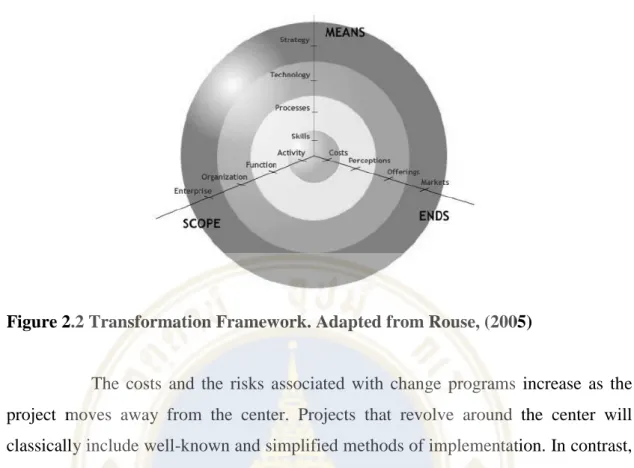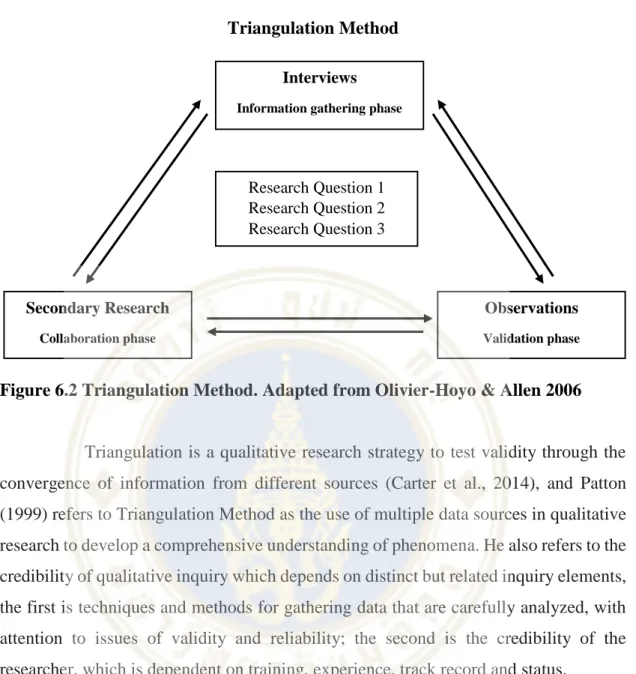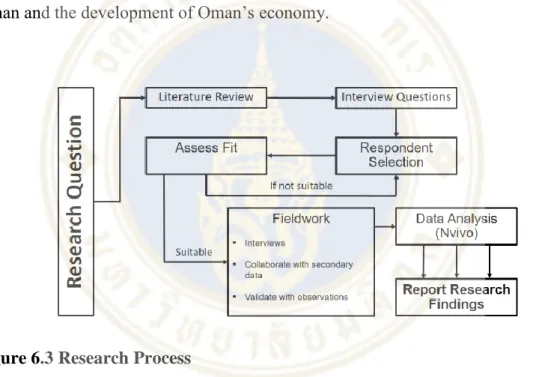A theoretical framework was established and research questions formed that examine existing theory and also provide opportunities to conduct phenomenon-based case studies that focus on areas of bank management in Oman that have not been previously explored. The research uses qualitative methods through a process of semi-structured interviews with senior bankers and entrepreneurs in Oman.

INTRODUCTION
It was futuristic for Schumpeter to theorize about technology in the early parts of the last century. Research questions have been formed by in-depth studies of the literature and also based on knowledge of the country's banking sector and its functioning.
LITERATURE REVIEW
Regulatory Reform
The question is how to incentivize the agent to act in the principal's best interest. If both the principal and the agent are utility maximizers (that is, they both try to obtain the maximum value for themselves individually), there is a possibility that the agent will not act in the principal's best interest.
Transformation
They can address gaps in the needs of stakeholders, i.e. the customers, employees, suppliers and investors of a company. Much of the current literature refers to the consistent and never-ending nature of change (Armenakis & Harris, 2009; Weick & Quinn, 1999), but the focus of management in any transformation initiative will be the incentives or rewards to be derived (Rouse, 2005).
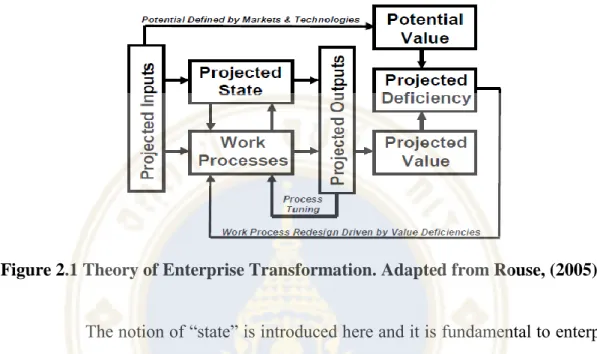
Mergers
The framework shows phases that are relevant to the entire target group, the acquiring party and the supervisor. The characteristics of the target group and the strategic intent of the acquirer can interact and influence the integration processes.
THEORETICAL FRAMEWORK
The literature confirms that the constructs have relationships and confirms that the relationships of regulatory reform, transformation, and mergers have interactive associations. From the definitions in the literature, each of the topics of regulatory reform, transformation and mergers are, and it shows, closely linked.
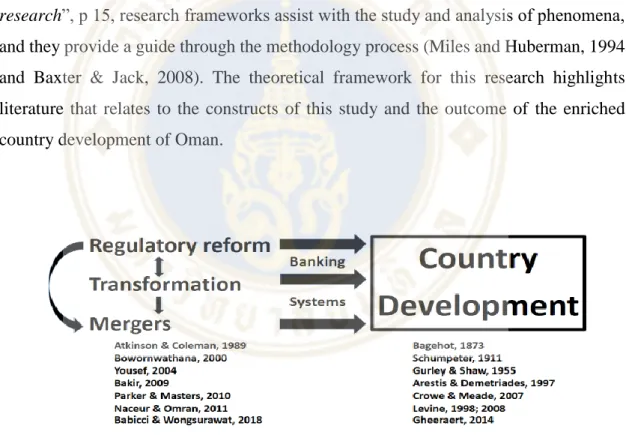
RESEARCH OBJECTIVES AND QUESTIONS
Regulatory Reform
Oman was the last of the GCC countries to initiate Islamic banking and it was evident that the structure of Islamic banking in the other countries had taken different forms. In light of the fact that certain and major banking markets have already questioned the effectiveness of Islamic banking and conventional banking coexisting and maintaining Sharia compliance, the following questions arise for Oman.
Transformation
The Central Bank of Oman has followed other GCC countries in their late introduction of Islamic Banking and similar to the United Kingdom following Australia in their review of the banking regulatory system, this has enabled the Omani regulator to consider the advantages and disadvantages of study and manage the other countries' regulation, and allow them to install a strong framework to ensure that Islamic Banks and Islamic windows in Oman will be sustainable and competitive in a well-established conventional banking market. He introduces what he calls "Agile Practice", these are three core "laws"; the law of the Small Team, the law of the customer and the law of the Network.
Mergers
It is interesting to see that Oman is preparing for two of the seven proposed mergers. Features of agency theory (Jensen & Meckling, 1976) can also influence the motives for mergers and in Oman there is a special situation in banks where the composition of the board (and sometimes management) is representative of a large part of the shareholding.
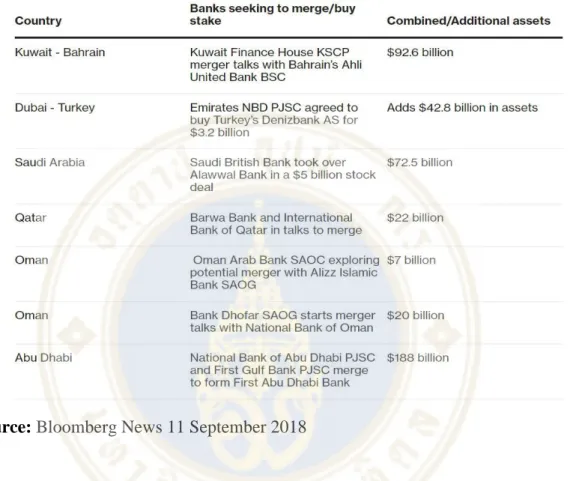
SCOPE OF RESEARCH
Next was to approach the banking sector in general, in relation to the selected topics. Oman provides an opportunity to research the gaps in knowledge of the banking system in relation to how regulatory reform, transformation and mergers have affected country and economic development.
METHODOLOGY
Research Method and Design
Observations by the researcher and other experts with in-depth knowledge of the banking sector and Oman. During a review of this research process, it is important that the researcher's objectivity as a possible industry insider is addressed.
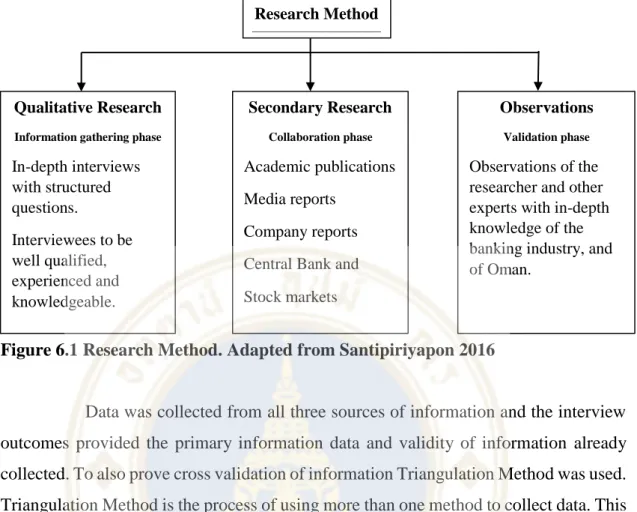
Research Process
A representative from the College of Banking and Finance of Oman was also included in the interviewee selection to provide an overview of the banking education sector. The number of respondents (twelve) was appropriate for this research methodology and the discussions showed a deep knowledge of the Omani banking and business environments, this provides satisfactory comfort that the outcomes of the interviews are appropriate and accurate.
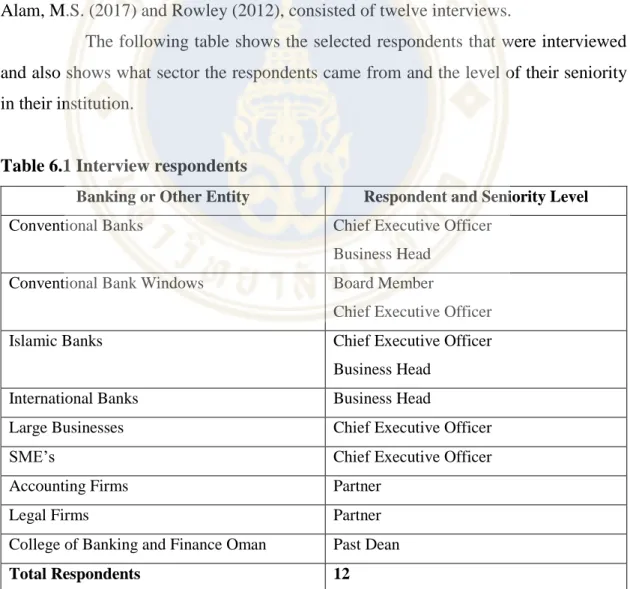
Interview Procedures and Questions Development
How these have been used effectively in Oman to drive development and yet maintain control and how the Central Bank of Oman operates. The Central Bank of Oman has been supportive of bank mergers (Molyneux & Iqbal, 2016 and Fahy, 2020), and recently there have been discussions about possible mergers (for example, Bank Dhofar/Bank Sohar, Bank Dhofar/National Bank of Oman , Oman Arab Bank/Alizz Bank).
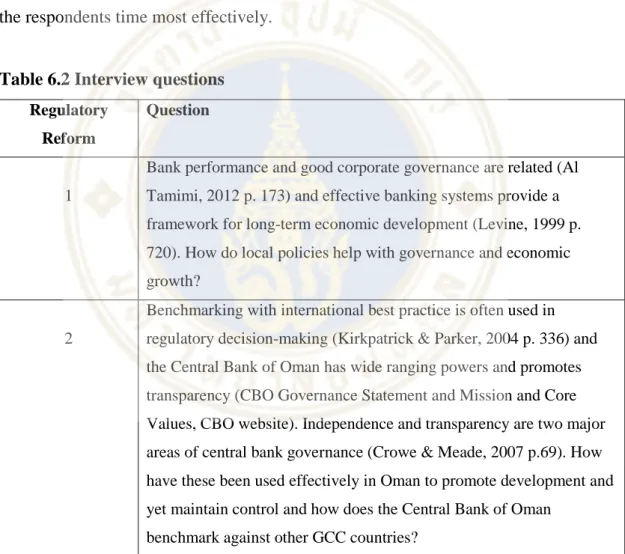
ETHICS
FINDINGS
Regulatory Reform
When Islamic banking was first introduced to the world in the 1960s, there were only dedicated Islamic banks. The Islamic banking regulatory framework introduced in December 2012 included the immediate establishment of a higher Sharia supervisory authority within the central bank.
Transformation
Alam and Alam (2017) confirm that Bank Dhofar has continued to use those attributes of urgency and agility, and that it is known in Oman as one of the fastest developing banks, which has given it a competitive advantage to rank second in the market. The Bank Dhofar transformation brought a new level of competition to the market and new ways to serve the needs of the nation, and it played a role in answering the banks'.
Mergers
The results in the success of the merger of HSBC and Oman International Bank can be confirmed by the financials of the joint bank. By doing so they will be able to participate and help in the economic growth and development of the country.
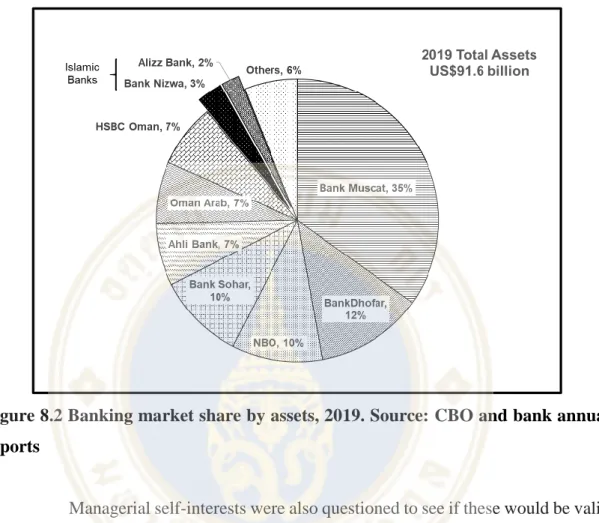
CONCLUSIONS
The case studies focus on gaps in current knowledge and literature in Oman and the wider banking society. Although the scope of the study is limited to the banking sector in Oman, the context and conclusions are expected to be useful in various industries and regions, and in other emerging and Arab countries.
Case study: from an "underperforming bank of the 80s" to one of Oman's best - the transformation of BankDhofar. Agency theory and corporate governance: A study of board effectiveness in their monitoring of the CEO.
APPENDICES
Case Studies
Appendix A: Case Study 1: Regulatory Reform
Appendix B: Case Study 2: Transformation
Appendix C: Case Study 3: Mergers
APPENDIX A: Case Study 1: Regulatory Reform
Islamic Banking In Oman: Laying The Foundations
Oil Reliance and Unemployment
The government regularly calls on the private sector to provide jobs for new Omani graduates. The strategies ensure that as part of their Vision 2030, government and the private sector work together to address development and economic diversification, including job creation.
Islamic Banking, Theory and Reality
This board will be responsible for standard approaches to governance and control of Islamic banking (Muzoriwa, 2019). There is a framework for Islamic banking in Bahrain, and the Central Bank has tightened its rules by requiring Islamic banks to be subject to external audits.
Oman’s Approach
It learned from the experiences of other GCC countries that both a comprehensive Islamic banking regulatory framework and a higher Shariah supervisory authority are needed to ensure compliance. The Islamic Banking Regulatory Framework introduced in December 2012 included the immediate establishment of a Supreme Sharia Supervisory Authority.
Concluding Remarks
In designing its own Islamic banking system, Oman relied on the experience of other countries. Oman is the only GCC country to have both Islamic banking management tools and Islamic banking windows.
Central Bank of Kuwait to Appoint Independent Shari'ah Supervisory Board," Islamic Business and Finance, 7 Februarie 2019. 14 van 2018 "Regarding the Central Bank & Organisation of Financial Institutions and Activities"; Artikel 17, Hoër Shari'ah Owerheid, 11.
APPENDIX B: Case Study 2: Transformation
Case Study: From an “Underperforming 80’s Bank” to One of Oman’s Best – the Transformation of Bank Dhofar
Background
These acquisitions make Bank Dhofar much larger and a rival to other major banks in the country. However, Bank Dhofar's growth has not kept pace with other major players (see Figure B).
How the Middle East can be Hazardous to Western Bankers
The Strategy
They have worked closely with management and the Board during the process of forming a new strategy. Decisions were made based on the consultant's recommendations in cooperation with the management and the Board.
People
These rewards were a powerful way to show that Bank Dhofar was serious about paying for outstanding performance. A "buzz" about Bank Dhofar as a great place to work had been created and very soon the results began to show.
The Local Context
Management was also authorized to make some on-site rewards for personnel who made significant contributions. The purpose of these meetings was to show that senior management was committed to staff and also to ensure that all messages were consistent and timely.
Processes
Products
In the end, the innovation experiment turned out to be an important lesson for Bank Dhofar. The card proved to be such a hit that the sheer volume of new applications almost broke the bank's under-resourced back office.
The Results
Over the next two years, the delayed effects of the global financial crisis hit Oman's economy. An independent study by Omani academic researchers concluded that Bank Dhofar was Oman's most efficiently managed bank between 2009 and 2013, based on perceived inputs and outputs (Singh & Fida, 2015).
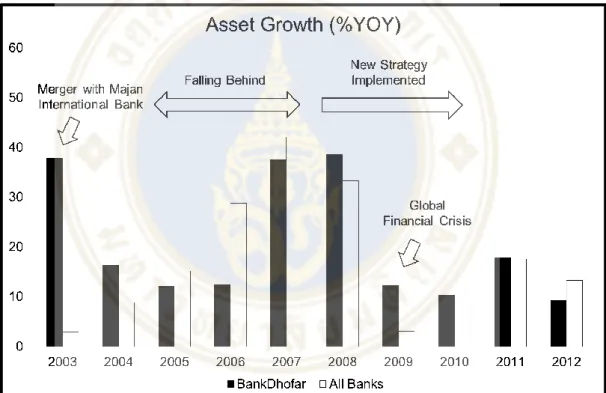
APPENDIX C: Case Study 3: Mergers
The Myriad Forces Shaping the Future of the Banking Industry in Oman
Abstract
Among the biggest tasks facing the government is creating employment opportunities for the large number of dropouts and graduates. The increase in the government's cost of borrowing coincides with a period when new investments are most needed to diversify the economy.
Oman’s Banking Sector
The next target that Bank Dhofar approached was the National Bank of Oman (NBO), which was 35% owned by The Commercial Bank of Qatar. In June 2018, The Commercial Bank of Qatar announced on their stock exchange (in Qatar) that it would begin discussions on a possible merger between Bank Dhofar and NBO.
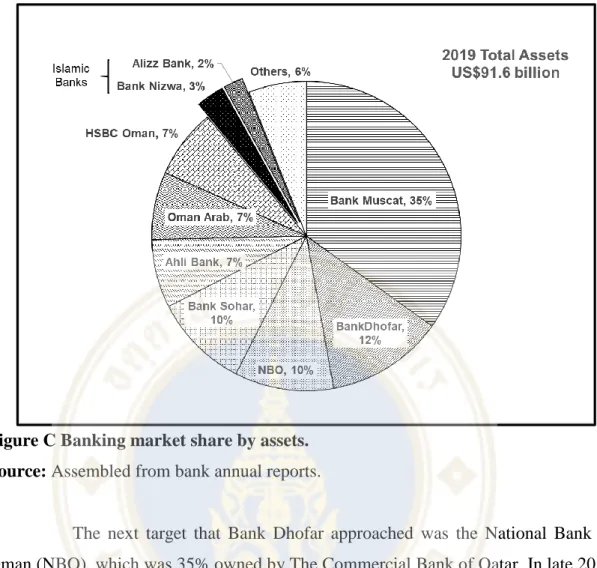
The Economics of Bank Mergers
While serious negotiations had been set in motion, none of the major banks had been able to agree on a format to join. The mergers are designed to be permanent and the expectation of successful integration of the combined businesses is for positive long-term benefits.
In-depth Interviews
The Central Bank of Oman declined to be interviewed and responded that internal approvals were not available due to the market sensitive nature of the proposed discussions. Moreover, to ensure the creation of jobs for Oman, the Central Bank of Oman maintains strict.
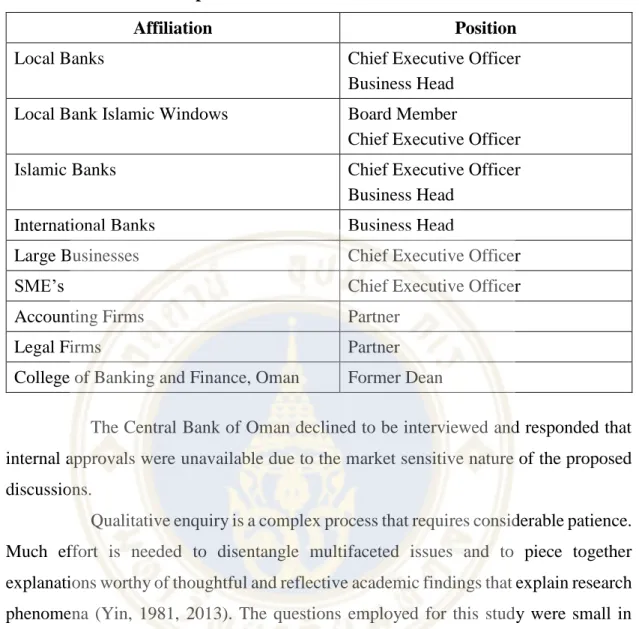
Findings and Discussion
Many of the banks have long-standing board members who are well known in the Omani market. A strategic concession by the Omani government in the wake of the Arab Spring was to allow the previously banned Islamic banking in Oman for the first time (Babicci and Wongsurawat, 2020).

